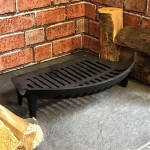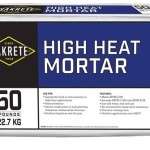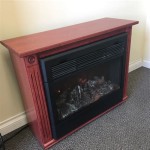Wood Mantels: Enhancing Fireplace Aesthetics and Functionality
A fireplace serves as a visual anchor within a room, offering both warmth and a focal point for gatherings. The mantel, positioned above the firebox, plays a crucial role in defining the fireplace's overall character and integrating it into the room's design. Wood mantels, in particular, have remained a popular choice for centuries due to their inherent beauty, versatility, and the warmth they bring to an interior space. This article explores the various aspects of wood mantels, examining their design considerations, aesthetic impact, functional benefits, and maintenance requirements.
Design Considerations for Wood Fireplace Mantels
Selecting a wood mantel involves careful consideration of several factors to ensure it complements the fireplace and the surrounding room. These include the style of the home, the size and proportions of the fireplace, the types of wood available, and the desired aesthetic effect. A well-chosen mantel seamlessly integrates into the existing décor, enhancing the room's overall ambiance.
Architectural Style: The architectural style of the home should heavily influence the mantel selection. For traditional homes, ornate mantels with intricate carvings or moldings may be suitable. These mantels often feature details like dentil molding, fluted pilasters, or floral embellishments, reflecting the craftsmanship and elegance of earlier eras. Conversely, modern or contemporary homes often benefit from simpler, more minimalist mantels with clean lines and a focus on the natural beauty of the wood. These mantels may feature a sleek, floating design or a simple rectangular shape, complementing the streamlined aesthetic of the space.
Fireplace Dimensions: The size and proportions of the fireplace itself must be carefully considered when selecting a mantel. A mantel that is too small will appear insignificant and disproportionate, while a mantel that is too large will overwhelm the fireplace and the surrounding area. As a general rule, the mantel should be slightly wider than the fireplace opening and should be positioned at a height that is both visually appealing and functionally appropriate. The height is generally determined by local building codes and safety regulations which will ensure combustible materials are a safe distance from the firebox opening.
Wood Selection: The type of wood used for the mantel significantly impacts its appearance, durability, and overall cost. Common wood choices include oak, maple, pine, cherry, and walnut, each offering unique characteristics. Oak is a strong and durable hardwood with a prominent grain pattern, making it a popular choice for traditional mantels. Maple is a lighter-colored hardwood with a smooth, even grain, often used in contemporary designs. Pine is a softer wood that is relatively inexpensive and easy to work with, making it a good option for budget-conscious homeowners. Cherry is a reddish-brown hardwood with a rich, lustrous finish, adding a touch of elegance to any fireplace. Walnut is a dark, luxurious hardwood with a distinctive grain pattern, often used in high-end mantels. The choice of wood should be based on personal preference, budget considerations, and the desired aesthetic effect.
Finishes and Treatments: The finish applied to the wood mantel plays a vital role in protecting it from damage and enhancing its natural beauty. Common finishes include stains, paints, and clear coats. Stains can be used to accentuate the wood's grain and add depth of color, while paints can provide a more uniform and opaque finish. Clear coats, such as varnish or lacquer, protect the wood from moisture and scratches while allowing its natural beauty to shine through. The choice of finish should be based on the desired aesthetic effect and the level of protection required.
Customization Options: Wood mantels offer a wide range of customization options, allowing homeowners to create a truly unique and personalized focal point. These options include custom carvings, decorative moldings, and integrated storage solutions. Custom carvings can add intricate details and personalized motifs to the mantel, reflecting the homeowner's individual style. Decorative moldings, such as crown molding or beadboard, can enhance the mantel's visual appeal and add a touch of elegance. Integrated storage solutions, such as shelves or drawers, can provide convenient storage for fireplace accessories or decorative items.
Aesthetic Impact of Wood Mantels
A wood mantel can significantly enhance the aesthetic appeal of a fireplace and the surrounding room. It serves as a visual anchor, drawing the eye and creating a sense of warmth and sophistication. The natural beauty of wood, with its unique grain patterns and warm tones, adds a touch of organic elegance to any interior space.
Enhancing Visual Appeal: A well-designed wood mantel can transform an otherwise ordinary fireplace into a stunning focal point. The mantel's design, wood type, and finish all contribute to its overall visual appeal. An ornately carved oak mantel, for example, can add a touch of traditional elegance to a living room, while a sleek maple mantel can complement the minimalist aesthetic of a modern space. The right mantel can elevate the fireplace from a simple heating appliance to a beautiful and eye-catching feature.
Creating a Focal Point: The fireplace is often a natural focal point in a room, and the mantel serves to accentuate this role. By drawing the eye towards the fireplace, the mantel helps to create a sense of balance and harmony in the space. The mantel can also be used to display decorative items, such as artwork, photographs, or candles, further enhancing its visual appeal and creating a personalized atmosphere.
Adding Warmth and Character: The natural warmth and character of wood can significantly enhance the ambiance of a room. Wood mantels add a touch of organic beauty and sophistication to any space. The unique grain patterns and warm tones of wood create a sense of comfort and inviting feel, making the room feel more welcoming and homely. A wood mantel can transform a cold and sterile space into a warm and inviting haven.
Integrating with Décor: A well-chosen wood mantel seamlessly integrates into the existing décor, enhancing the room's overall aesthetic. The mantel's style, wood type, and finish should complement the other elements in the room, such as the furniture, wall colors, and flooring. A cohesive design creates a sense of harmony and balance, making the room feel more stylish and inviting. The mantel can also be used to tie together different design elements, creating a unified and visually appealing space.
Personalization and Style: Wood mantels offer ample opportunities for personalization and self-expression. Homeowners can choose a mantel that reflects their individual style and preferences, whether it's a rustic barn beam mantel or a sleek and modern design. The mantel can also be customized with carvings, moldings, or other decorative elements, allowing homeowners to create a truly unique and personalized focal point. This level of customization ensures that the mantel perfectly complements the homeowner's vision for their space.
Functional Benefits and Maintenance of Wood Mantels
Beyond its aesthetic appeal, a wood mantel offers several functional benefits, including providing a shelf for displaying decorative items and protecting the wall above the fireplace from heat damage. However, wood mantels require regular maintenance to ensure their longevity and beauty. Proper care and cleaning can prevent damage from heat, moisture, and dust.
Display Space: One of the primary functional benefits of a wood mantel is the provision of a shelf for displaying decorative items. This shelf can be used to showcase artwork, photographs, candles, or other personal items, adding a touch of personality to the room. The mantel shelf provides a convenient and visually appealing way to personalize the fireplace and create a more inviting atmosphere. The items displayed on the mantel can be changed seasonally or to reflect personal interests, allowing homeowners to constantly refresh the look of their living space.
Protection from Heat: A wood mantel also serves to protect the wall above the fireplace from heat damage. The mantel acts as a barrier, deflecting heat and preventing it from directly contacting the wall. This can help to prevent discoloration, cracking, or other forms of heat-related damage. The size and placement of the mantel should be carefully considered to ensure adequate protection. Local building codes and manufacturer specifications will outline required clearances from the firebox opening to combustible materials like wood. It's essential to adhere to these regulations to protect the wall and maintain a safe environment.
Maintenance and Cleaning: Proper maintenance and cleaning are essential to preserve the beauty and longevity of a wood mantel. Regular dusting can prevent the buildup of dirt and grime, while occasional cleaning with a mild soap and water solution can remove stubborn stains. Avoid using harsh chemicals or abrasive cleaners, as these can damage the wood finish. Periodically inspecting the mantel for cracks or other signs of damage and addressing them promptly is crucial. If the mantel is exposed to excessive heat or moisture, it may require more frequent maintenance. Depending on the finish, reapplication of protective coatings may be necessary over time.
Safety Considerations: Safety is a paramount concern when installing and using a wood mantel. As mentioned, maintaining proper clearances between the mantel and the fireplace opening is crucial to prevent fire hazards. Ensure that all installation guidelines are followed and that the mantel is securely attached to the wall. Avoid placing flammable items, such as candles or paper, too close to the fireplace opening. Regular inspections of the fireplace and chimney are also essential to ensure safe operation. Consult with a qualified professional to ensure that the fireplace and mantel are installed and maintained safely.
Repair and Restoration: Over time, wood mantels may require repair or restoration due to damage from heat, moisture, or general wear and tear. Simple repairs, such as filling cracks or repairing minor scratches, can be done by homeowners with basic woodworking skills. More extensive repairs, such as replacing damaged sections or refinishing the entire mantel, may require the expertise of a professional. Restoring an antique or vintage wood mantel can be a rewarding project, preserving its historical value and adding character to the home. When restoring a mantel, it's important to use appropriate materials and techniques to maintain its original appearance and integrity.

Barnwood Fireplace Mantel The Collection

Fireplace Mantel Wood N Finish Kit Walnut

Distressed Alder Mantel Notable Wood

Mount Vernon Mantels Custom Wood Fireplace Manufactured To Your Specifications

Olde Wood 8 X Reclaimed Mantel Shelfhand Hewn 95 Long Teak Mantels Fireplace

Diy Rustic Fireplace Mantel The Cure For A Boring
:max_bytes(150000):strip_icc()/sandandsisal-bdc76ad938a44d28ae9e23ef6c9fa331.jpg?strip=all)
17 Diy Fireplace Mantel Plans

Barton 60 In W Floating Vintage Wood Fireplace Mantel Cap Wall Shelf Beam Easy Mount Ash 95156 The Home Depot

Country Living 48 In W X 5 H 9 D Beach Sand Pine Hollow Farmhouse Fireplace Mantel The Mantels Department At Com

Modern Rustic Mantel 7 Deep By 6 Tall Sawtooth Ridge Woodworks
Related Posts








